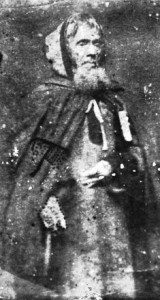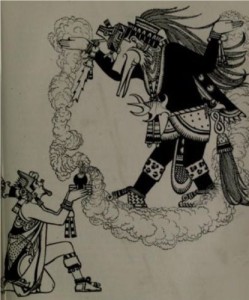 Perhaps the mostly widely recognized landmark in the Las Vegas area, Hermit’s Peak looms over the surrounding plains at 10,263 feet. You may remember it from a scene in the movie Red Dawn, which was filmed nearby (the 1984 version, not the remake). It’s worth noting that Red Dawn stars the late Patrick Swayze who later returned and bought a ranch just a few miles from the mountain.
Perhaps the mostly widely recognized landmark in the Las Vegas area, Hermit’s Peak looms over the surrounding plains at 10,263 feet. You may remember it from a scene in the movie Red Dawn, which was filmed nearby (the 1984 version, not the remake). It’s worth noting that Red Dawn stars the late Patrick Swayze who later returned and bought a ranch just a few miles from the mountain.
Over the years Hermit’s Peak and it’s sole resident, Juan Maria d’Agostini, have become an important part of the local culture. The mountain was known to the early Spanish settlers as El Cerro del Tecolote, or the Hill of the Owl. That changed when an unusual figure came to the area in the 1860s. He was described as a short and thin man with a brown eyes and a gaunt face. He wore a long dark cape and leaned on a walking staff. The local residents had never seen anyone so striking and mysterious. They called him El Ermitano, the Hermit.
Born in northern Italy in 1801, Giovanni Maria de Agostini came from a wealthy family. He studied Latin, French, and theology before taking the vow of Saint Anthony the Abbot. He then dedicated himself to a Monastic life of poverty, austerity and virtue. After traveling around in Europe he set out for South America, landing in Caracas, Venezuela in 1839. In South and Central America he traveled from Venezuela to Peru, Brazil, Argentina, Chile, Bolivia, Panama, Guatemala, and Mexico. In 1861 he journeyed to North America and arrived in New York City. Except for voyages which required boats, his only mode of transportation was by foot. From New York he walked up to Canada, and then down to Kansas.
Agostini found his way to Las Vegas, New Mexico accompanying a wagon train from Council Grove, Kansas along the Santa Fe Trail in 1863. When offered a ride on one of the wagons he said that he preferred to walk, and asked only for some cornmeal mush to nourish himself. By this time he went by the name Juan Maria d’Agostini. But to the religious settlers of early Las Vegas he was simply the Hermit. Due to his appearance and wise demeanor he was perceived of as a holy man, a healer and a miracle worker. He claimed to be none of these things. Nonetheless, throngs of locals collected wherever he resided, seeking counsel, healing and miracles. Eventually d’Agostini set his sights on the 10,263 foot mountain, where he finally found the solitude he longed for in a cave near the summit.
When I was growing up my parents ran Western Life Camp as a kid’s summer camp. I made the trek to Hermit’s Peak several times. I remember the first part of the hike as fairly mild: gentle hills covered in Ponderosa and Spruce trees, then you reached a giant field of boulders and got your first view of the rocky precipice. The last stretch is the steepest: a series of switchbacks. Finally atop the summit I recall an expansive view; it seemed you could see all the way into Texas. A small somewhat flat meadow provided a great space to relax, eat your lunch and take in the view. We then walked a few hundred yards down one side of the summit to the shallow cave where d’Agostini had resided, and imagined the simple but profound existence he had.
Hermit’s Peak is a beautiful and rewarding hike with a unique history. Guests of Western Life Camp can enjoy this wonderful trek, and many other nearby hikes, listed on our Activities page.
Hermit’s Peak hike info:
Hike Distance: 4.25 miles (8.5 round trip)
Vertical ascent: 2,720 feet
Approximate Hiking Time: 3.5 hours, one way
The trailhead to Hermit’s Peak is 7 miles Northeast of Western Life Camp, in the El Porvenir Campground.
Contributed by Mike Root







